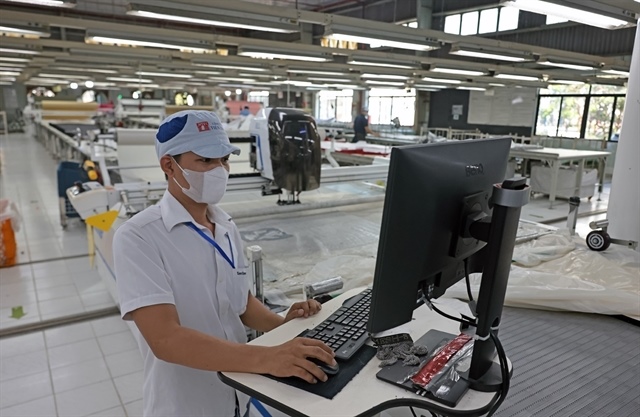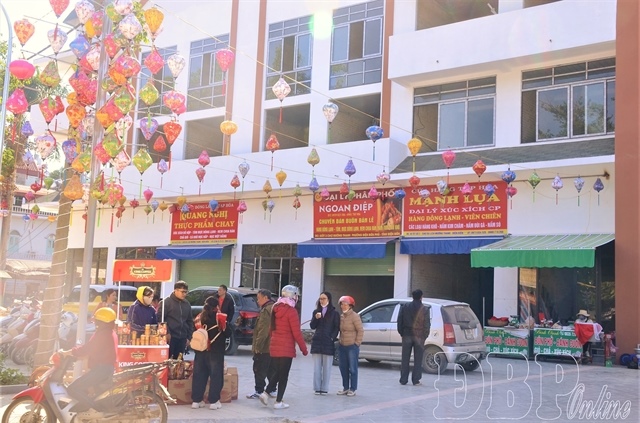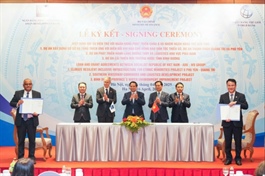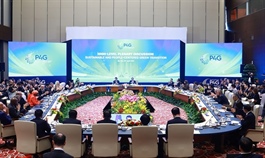FDI inflows can be growth innovator
FDI inflows can be growth innovator
Vietnam stands at a critical juncture in its economic transformation. Emerging technologies like AI and semiconductors offer a rare chance to move beyond low-cost manufacturing and become a regional innovation hub. To be a leader of Southeast Asia’s digital future, Vietnam should accelerate the sustained effort to attract the next wave of foreign investment and help shape the region’s tech landscape.
Vietnam’s technology and electronics sector is a key driver of economic growth and foreign investment. With a strategic location, strong trade agreements, and a young, tech-savvy workforce, the country has become a regional hub for electronics manufacturing, and is aiming to become a technology powerhouse. Global firms like Samsung, Intel, LG, and Foxconn have established major operations, boosting exports and investment inflows.

Tu Nguyen and Bao Tram Ha, associates, Tony Blair Institute for Global Change |
Emerging areas such as semiconductor packaging, batteries, smart appliances, and digital infrastructure offer new opportunities. Recent investments from Amkor and Intel suggest rising confidence. To sustain momentum, Vietnam must enhance competitiveness, expand innovation capabilities, and attract higher-value, technology-driven foreign direct investment (FDI).
Attracting high-quality tech FDI requires foundational enablers such as skilled talent, clean energy, strong intellectual property (IP) protection, and regulatory efficiency. While Vietnam has advanced through trade liberalisation, fiscal incentives, and workforce development, structural barriers persist. Key challenges include a shortage of industry-ready high-tech talent, infrastructure deficits – particularly in clean energy and digital connectivity – and weak IP enforcement, and fragmented regulations among others.
To remain competitive, Vietnam must accelerate reforms in talent development, infrastructure, regulatory consistency, and investor services. Building a more responsive, innovation-friendly environment will be essential to attract high-quality FDI and advance its position in the regional tech ecosystem.
As Vietnam pursues its goal of becoming a leading tech-driven FDI hub, it can draw valuable lessons from ASEAN peers that have built strong digital economies through strategic policies, investor-friendly environments, and innovation-led growth.
Singapore sets a regional benchmark for attracting high-tech FDI, supported by regulatory stability, strong IP protection, and a skilled workforce. Institutions like the Economic Development Board, alongside targeted tax incentives and robust research and development (R&D) investment, have fostered a strong innovation ecosystem. Recent investments, including TSMC’s planned chip packaging facility and Google’s expanded cloud region, further cement its role as a regional tech hub. Public-private collaboration ensures continued responsiveness to global tech trends.
Indonesia capitalises on its large consumer base and growing digital economy through initiatives like “Making Indonesia 4.0”. Regulatory reforms and incentives have attracted investments in data centres and fintech. Notable examples include Microsoft’s $1.7 billion investment in cloud infrastructure and Google’s support for Indonesian startups, reinforcing its position as a rising digital player.
Malaysia, through the MYDIGITAL blueprint, has focused on AI, cloud computing, and high-value manufacturing. Major projects include Infineon Technologies’ $5.4 billion wafer facility and Amazon Web Service’s planned $6 billion investment. Its emphasis on talent and digital infrastructure has created a competitive environment for sustained, innovation-led FDI growth.
Peers like Singapore and Malaysia have successfully addressed structural challenges through strong institutional frameworks, one-stop-shop facilitation models, targeted incentives, and public-private collaboration, demonstrating the importance of aligning national goals with investor needs.
To translate its 2030 vision into measurable outcomes and keep pace with Vietnam’s regional counterparts, Vietnam should shift from vision-setting to implementation by operationalising strategies such as the digital transformation programme and Industry 4.0 strategy. This requires coordinated, sector-specific reforms focused on regulatory streamlining, institutional strengthening, and responsive investor services to attract high-quality, innovation-led FDI.
Vietnam is invited to consider recommendations, focusing on some issues. First is prioritising sector-specific digital transformation to unlock productivity gains across its diverse economic base. With manufacturing contributing 24 per cent of GDP, agriculture 12 per cent, and rising inputs from logistics and business process outsourcing, Vietnam is well-positioned for targeted digital advancement.
Yet adoption remains uneven – only 20–25 per cent of manufacturers use advanced technologies like cloud computing or data analytics. Tailored digital strategies can address sector-specific bottlenecks, such as supply chain inefficiencies or traceability gaps. McKinsey estimates suggest productivity gains of 15–25 per cent in mid-tech industries. An adaptive, sector-driven approach will be key as Vietnam’s labour cost advantage narrows.
Second is building up a stable, transparent regulatory environment to attract high-quality digital investment. Vietnam continues to face challenges such as fragmented regulations, administrative inefficiencies, and weak IP enforcement. Accelerating the passage of the Law on Digital Technology Industry and establishing specialised IP courts would enhance legal clarity and investor confidence. Strengthening investment promotion agencies through a centralised, one-stop-shop model, similar to Singapore’s, could improve coordination and streamline support for high-tech investors.
Energy reliability is another critical constraint. Expanding clean energy access through renewable energy quotas, accelerating direct power purchase agreements, and upgrading grid infrastructure in key tech hubs are necessary to support sustainable growth. Infrastructure modernisation – particularly in logistics, transport, and digital connectivity – must also be prioritised to meet the demands of high-value industries.
To engage innovation-led FDI, Vietnam should take more proactive steps. With R&D accounting for just 5.4 per cent of total FDI, the government could introduce super tax deductions of up to 200 per cent for R&D in strategic sectors like semiconductors, AI, and green tech. Co-investment grants for foreign R&D centres partnered with universities or the National Innovation Centre, alongside incentives for tech transfer and local supplier development, would strengthen Vietnam’s role in global innovation value chains.
The third aspect is implementing a national talent development strategy focused on high-tech skills. Although Vietnam produces over 400,000 STEM graduates annually, fewer than 30 per cent are job-ready in critical fields like AI, semiconductors, and cybersecurity. Collaboration with global tech firms is needed to reform curricula, strengthen applied training, and build university-industry links.
The final factor is for Vietnam to seize emerging global investment flows in aforementioned key areas. As global firms diversify supply chains and seek stable, innovation-ready destinations, Vietnam’s competitive advantages can be strategically leveraged.
|
Herald van der Linde, head of Equity Strategy Asia-Pacific, HSBC Asia is changing. Supply chains are moving across the region. Apple, for example, is setting up new facilities in Indonesia. Samsung is investing big in Vietnam. It is generally assumed that this offers good job opportunities for locals. The question is whether they have the right skill set to be employed in these advanced facilities. In this context, education is an important part of moving away from the low-quality, low-paying manufacturing of yesteryear. We found that there are very significant benefits to growth if the majority of students finish higher secondary education. That is where the number of startups rises, productivity flourishes and GDP per capita increases significantly. At present, many Asian nations have not reached these education levels. A few, however, stand out: China, the Philippines, and Vietnam. They score well, and this is where small improvements in education attainment could result in large economic benefits. It is not just getting more students to finish secondary education. There should also be a focus on the quality of education. A measurement of this – the so-called PISA score – shows that ASEAN and South Asia in particular need to bridge the gap in terms of quality of education. Doing so will enable them to capitalise on the opportunities that come from shifts in supply chains. In this regard, Vietnam performs exceptionally well, nearly matching the educational standards of developed nations. The latest PISA results are comparable to those of France. Across Asia, prospective students are very much aware of the education gap. To gain a better education, they look across borders. The number of international students in countries like China, Japan, and South Korea are growing fast, and many come from other parts of Asia. This is, however, only possible for those that have parents that can finance expensive overseas studies. The issue remains that the majority of Asia’s workforce do not possess advanced or tertiary education, while there is a huge demand for highly skilled talent who are well-equipped to deal with complexities involved with industries that are more advanced. Here, Vietnam has tremendous opportunities to invest in better education before others do so. It is already well under way to do so, and explains why it is gaining foreign direct investments. This is all very positive for Vietnam. In the long run, excellent in education is one of the best ways to ensure sustainable economic growth. |
- 11:30 17/04/2025



























